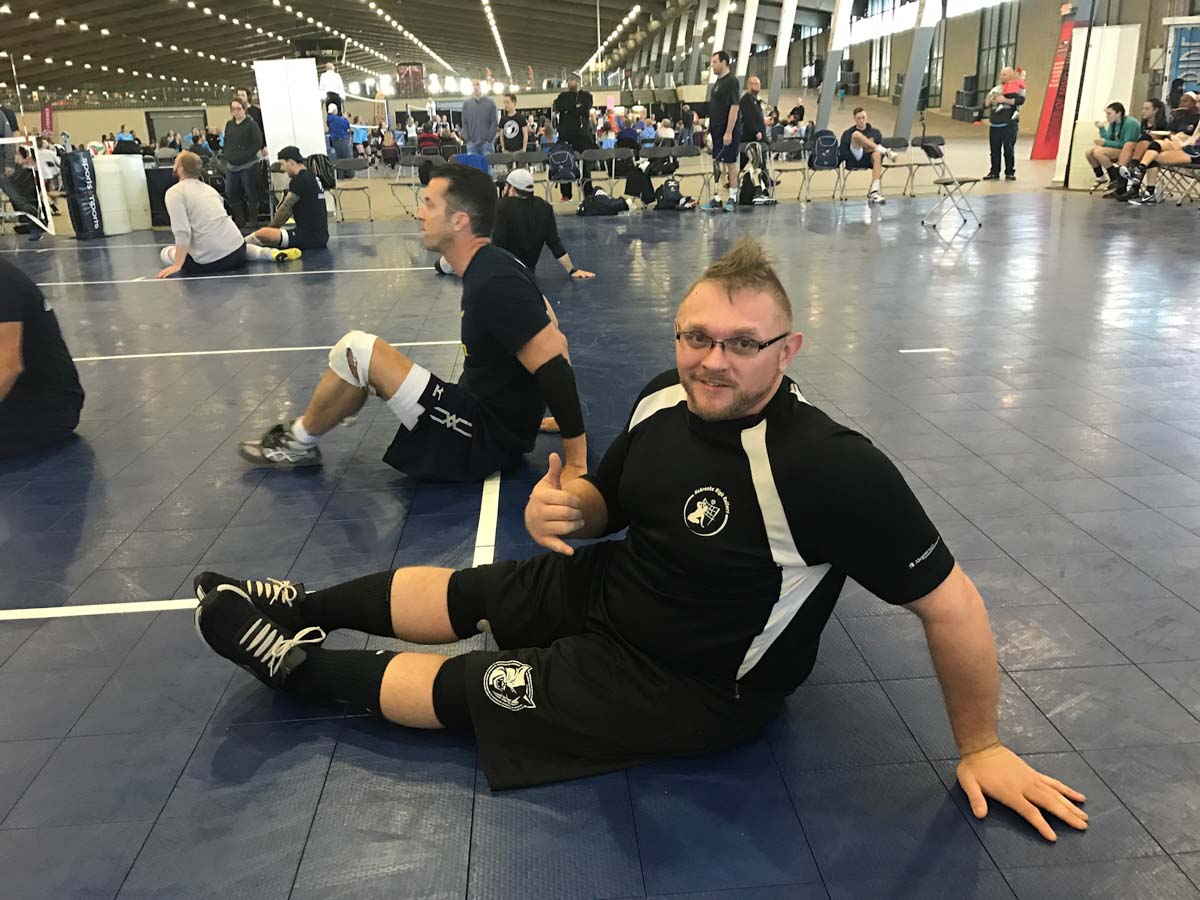
Rules

The court size and height of the net are modified for sitting volleyball. Modifications to gym space are acceptable for local play, as long as both courts are equal in size. Most programs use a normal net that is 1m wide and 10m long, attached to the standards of a 9 x 18m court.
The regulation sitting court size is 6 x 10m. Boundary lines are included in the court. The centerline divides the court into two courts, 6 x 5m each. The net is 1.15m for men and 1m for women.
Regarding the zone lines, the attack lines are drawn parallel to the centerline and 2m from the middle of the centerline. The service zone is marked with two lines, each 15cm long and placed inside the service zone at the end of each court, 20cm behind and perpendicular to the end line. Both are drawn as an extension of each sideline.
Key Rule Modifications that are Different from Standing Volleyball
The position of each player is determined and controlled by the position of their bottoms. This means that the hand(s) and/or leg(s) may lie in the attack or free zone outside the court.
“Bottom” is defined as the upper part of the body, from shoulder to one’s buttocks.
Touching the opponent’s court beyond the centerline with a hand is permitted, if some part of the penetrating hand remains either in contact with or directly above the centerline. To contact the opponent’s court with any other part of the body is forbidden. The player may penetrate into the opponent’s space under the net, provided there is no interference with the opponent.
The player is not allowed to lift his/her bottom from the court when executing any type of attack-hit. The back-row player may perform any type of attack-hit from any height, if at the time of the hit the bottom does not touch or cross over to the attack line.
The player must have contact with the court with some part of the upper part of the body at all times when playing the ball, except when making a defensive free zone play. In such defensive play, a loss of contact with the court is permitted for a moment.
The referee’s official hand signal of “lifting from the court” is raising the upper hand and forearm positioned parallel to the floor and mirror imaging the lower hand and forearm.
Referees in sitting volleyball must stand to the sides of the court because of the height of the net and the fact that the players are in a seated position.

